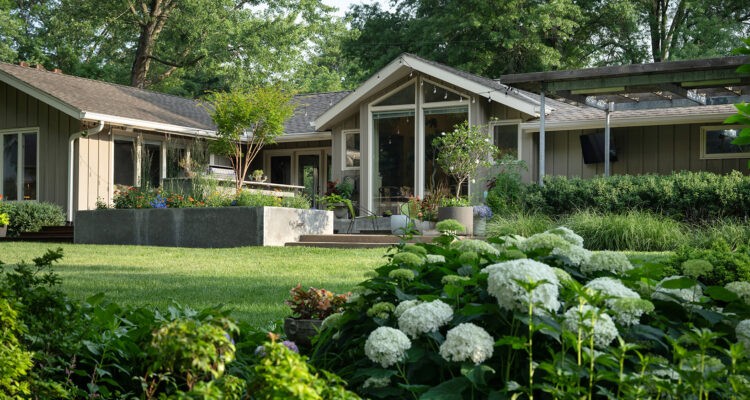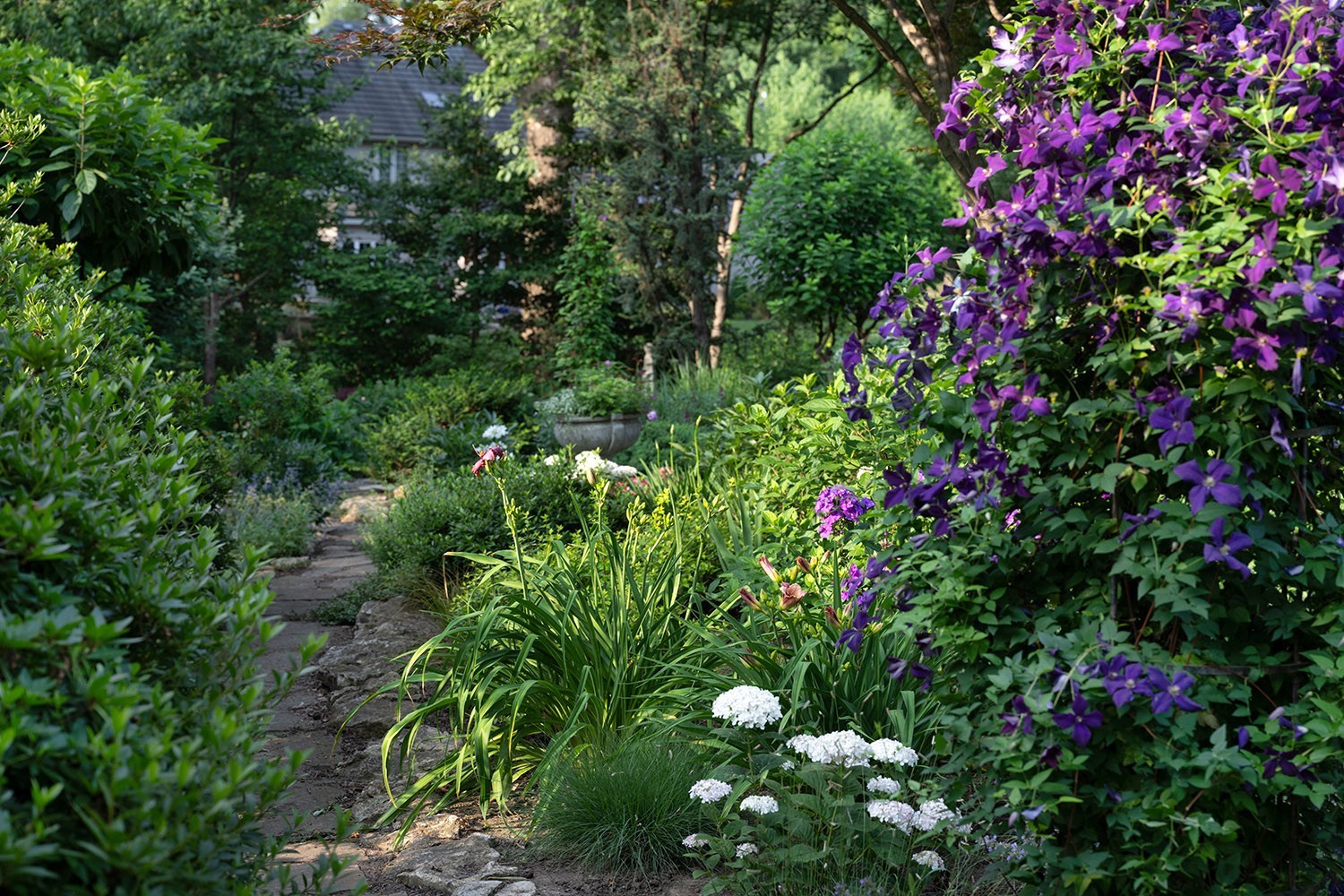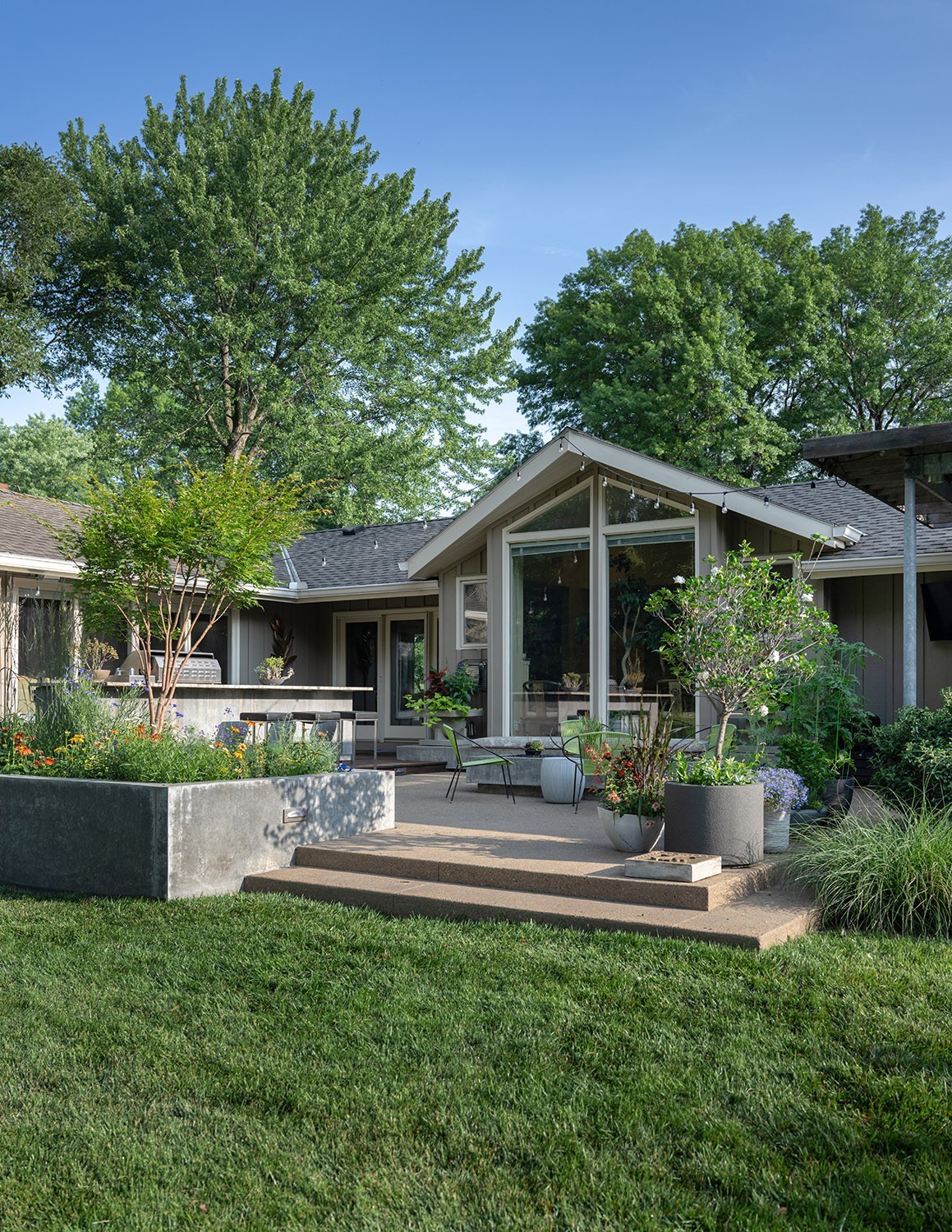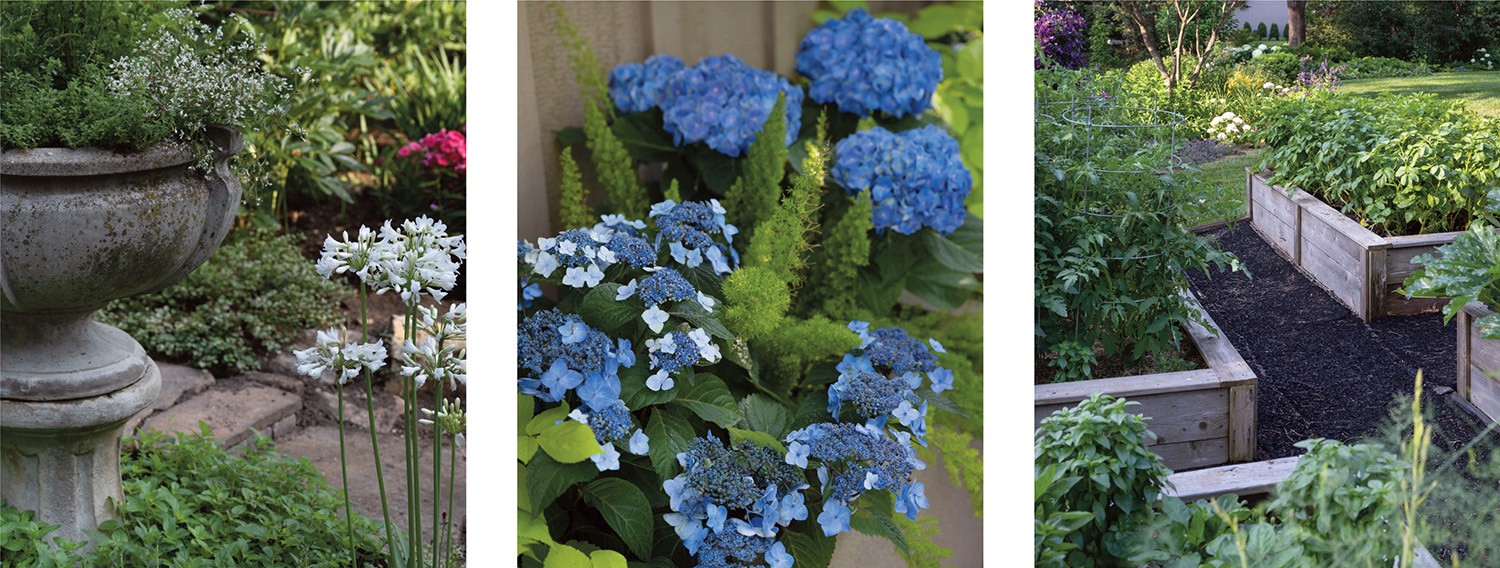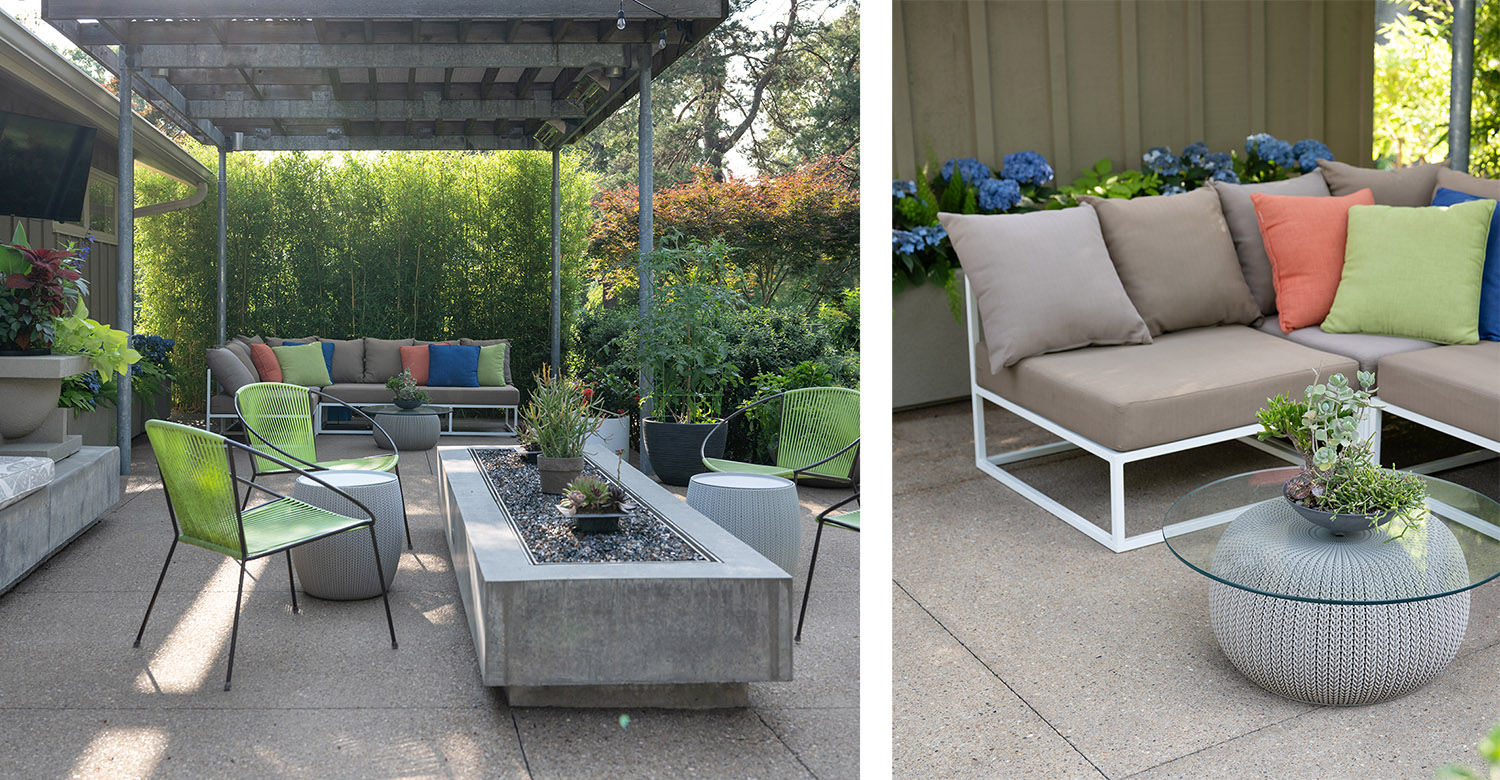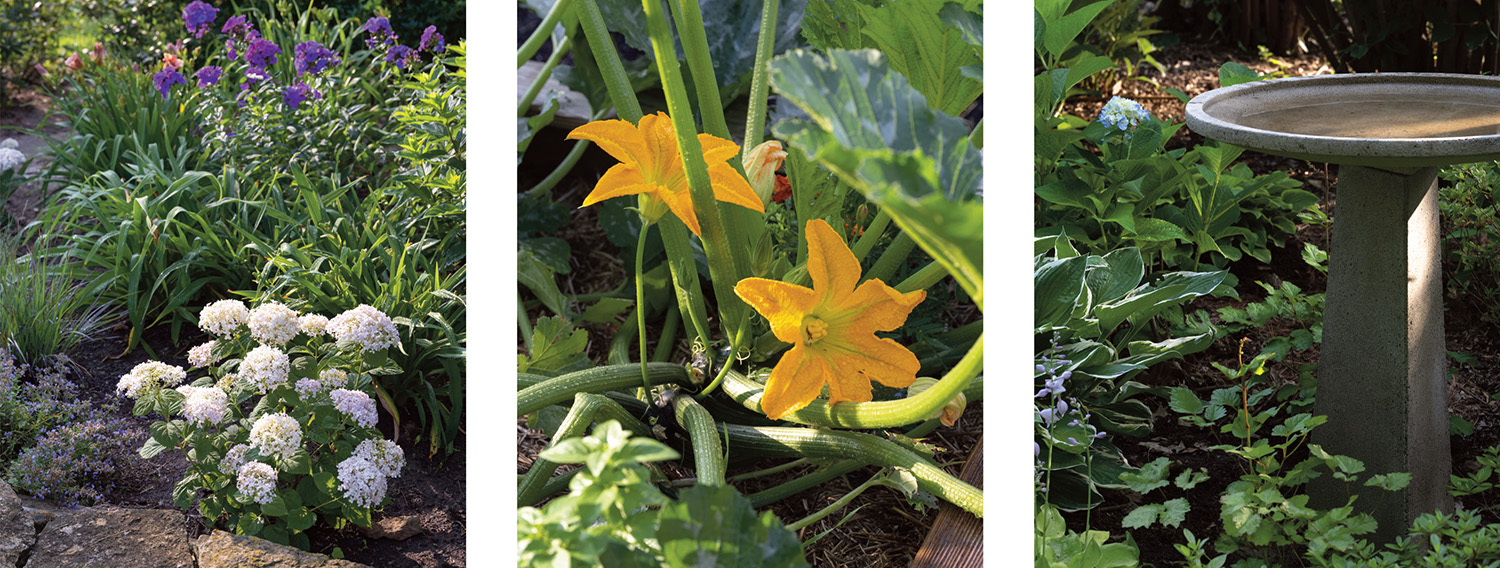A beautiful garden takes shape over many years and with the expertise of one local master gardener.
Story by Michelle Mastro | Photography by Matt Kocourek
Beautiful gardens take time to cultivate, especially if you want a nice balance of native blooms, perennials, and evergreen shrubs. Landscape Architect, Bob Lindeblad, has been gardening for years, and he knows a thing or two about creating award winning gardens. Last year, his home’s immense garden was on the International Master Gardener’s Tour held by the Johnson County K-State Research and Extension Master Gardeners. But though his garden is indeed spectacular and varied now, it wasn’t built in a day.
In fact, Lindeblad’s garden has been evolving these last thirty years. When he purchased his home in 1985, he did so with the intention of one day building a massive garden. “The lot is three quarters of an acre,” he says, “so I knew I could experiment with different gardening ideas.” Knowing some plants would take longer than others to mature, Lindeblad immediately planted trees in the back of the lot. Today, the mature Norway spruces, originally planted at five feet tall in the late 80s, now tower over the property.
And as the years progressed, so has Lindeblad’s approach to gardening. “Back in the 80s, when I first started the garden, I was inspired by a visit to England where I saw their gardens,” he recalls. As a result, he began planting his garden with perennials inspired by British blooms, but he eventually realized some of these required lots of maintenance as they were not as agreeable to Kansas weather and largely non-natives.
Years later, after reading about a newly planned Resort Community, Sea Pines at Hilton Head, South Carolina, he visited multiple times, and he was again inspired, this time by the location’s Southern gardens. “The hydrangeas and azaleas appealed to me,” he recalls. “As hydrangeas became more popular, and hardier, I started adding more to my garden.” Thus, his garden again transformed with these bushier blooms, filling up sections of the landscape with bursts of colors.
However, jump to recent years, and Lindeblad has started getting back to planting more native species. “I didn’t like the look of some of the native species at first,” he admits, but knowing they benefited local pollinators, with less maintenance, he slowly warmed up to them. “Plus, I realized they mix great with hydrangeas and roses,” he explains. Lately, wanting to make a richer palette of color during winter months, he has begun adding in more evergreen shrubs, some as tall as six feet, to give more structure to the garden in winter. “They’re less maintenance,” he says, “and they look really nice with snow covering them.”
In this way, Lindeblad is a reflective gardener, always considering how his plants might look when placed together. It’s probably the biggest reason for why his gardens win awards and dazzle his guests. “Gardening is sort of like arranging flowers,” he reveals. “You must think about each plant’s color palette, texture, and height.” Though sometimes it can take time finding the perfect spot for each plant. “I might find a plant I really like, but I’m not sure where I will use it, so I will go around the garden and find the right spot for it.”
Just as importantly, Lindeblad considers how his new plant might thrive in that spot year-round. “And if something doesn’t work out, you can always dig it up and give it away.” That’s the beauty of gardening, he says: “Plants tend to be affordable. They’re not like expensive pieces of furniture you have to try to live with for twenty years.”
Unafraid to make bigger changes, Lindeblad also mixes up his garden planters. In the 80s, Lindeblad built a low wood deck on the back of the house, but after many years, it started rotting, so he decided to update it. With the help from a fellow landscape architect Kurt Kraisinger, owner of LORAX Design Group in Overland Park, they designed a midcentury modern inspired patio with built-in planters of poured-in-place natural concrete. The patio was poured with lightly tinted exposed aggregate concrete. Wanting some warmth to the dining area, an IPE wood decking was included. “I had to warm up to the idea that the planters, bar, and fire pit were to be a natural gray concrete,” he says. “But looking back, it was absolutely the right materials for the right location.”
The vegetable garden also found its right location. When the patio was built, the side yard was all torn up. The area happens to get the most sun, and Lindeblad realized it would be the best place to put vegetables, which tend to require a minimum of six hours of sun a day.
Eventually, he built four raised beds. Two measure 4’ by 8’ and the other two measure 4’ by 12’, allowing for plenty of room for vegetables such as green beans, squash, asparagus, cucumber, potatoes, and tomatoes, the last of which grab the attention of some sneaky squirrels and chipmunks. “Even though the raised beds are sixteen inches high, the critters tend to take a bite and then leave,” he laughs. “I think they are drawn to the moisture of the tomatoes during summer.” So, Lindeblad puts up a fence around the tomatoes when getting ripe and places saucers of water to help the animals and keep his tomatoes safe.
As winter turns to spring, the vegetable garden waits patiently for March when Lindeblad will plant his potatoes. Then as the weather warms up, other vegetables, basil, and marigolds around the vegetable garden to help keep pesky bugs away. “And my neighbors are welcome anytime to pick the basil and other vegetables for cooking,” he says. Lindeblad’s gardens are meant to be enjoyed. “I’m usually out there every day.”

